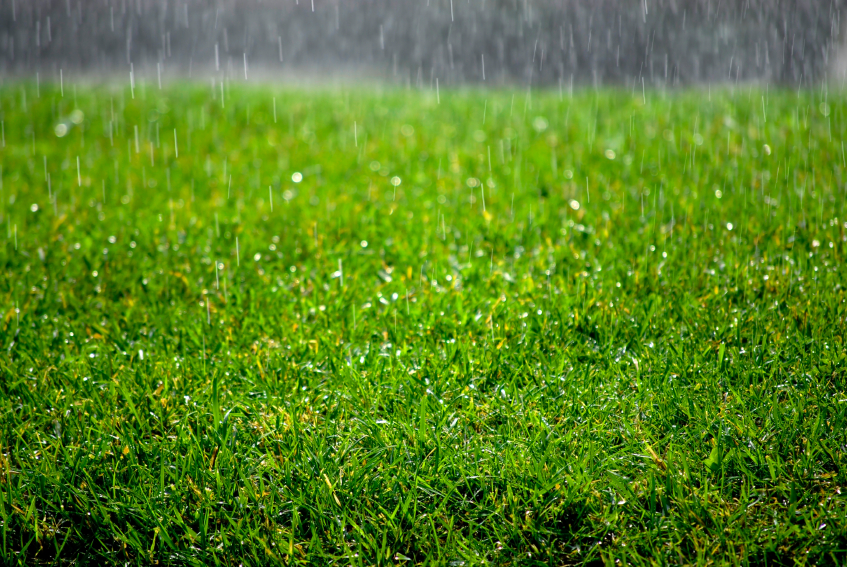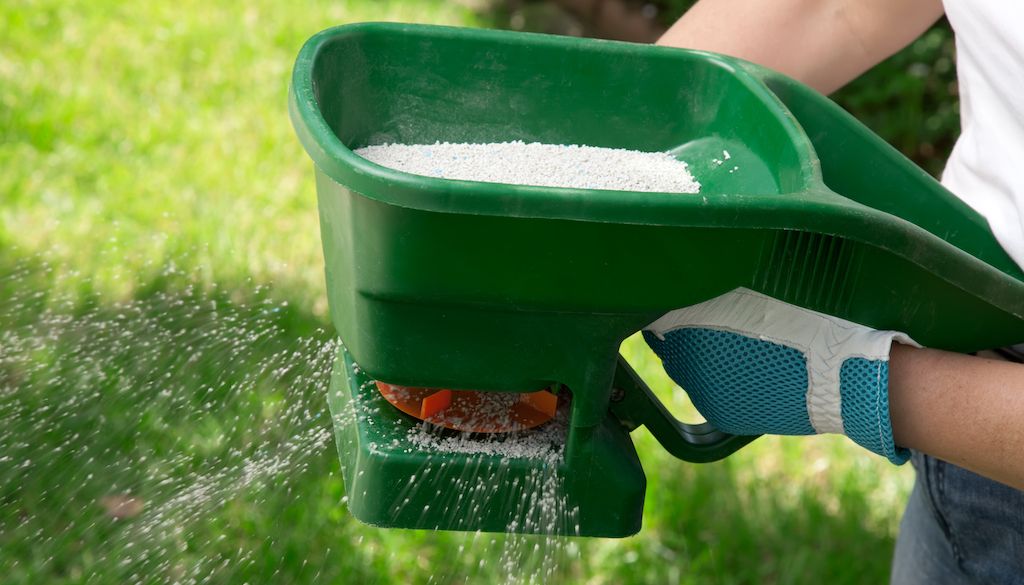You’ve finally carved out a Saturday morning to tackle your lawn care, fertilizer spreader loaded and ready to go. You step outside and notice the grass is still damp from last night’s rain or this morning’s dew. Sound familiar? You’re standing there thinking, “Do I wait for it to dry, or just get this done now?” This exact scenario plays out in driveways across Maryland every weekend.
We get it – between work, family, and everything else on your plate, finding the perfect window for lawn care feels impossible. The timing of when you apply fertilizer can make the difference between a thick, healthy lawn that’s the envy of the neighborhood and one that’s patchy, burned, or struggling to thrive.
In this guide, we’ll give you the straight answer about fertilizing wet vs. dry grass, plus practical tips that actually work for busy homeowners like you. After dealing with Maryland’s unpredictable weather patterns for years, we’ve seen what works and what doesn’t. No complicated science jargon – just real solutions for real lawns in our area.
The Short Answer: Dry Grass Wins (But It’s More Complicated)
Here’s what you came here for: fertilize dry grass, not wet grass. When your lawn is dry, the fertilizer granules stick better to the grass blades and distribute more evenly across your yard. You get better coverage, less waste, and your grass actually absorbs the nutrients properly.
But like most things in lawn care, it’s not that simple. The “dry grass rule” works about 90% of the time, but there are exceptions that could save you from missing important fertilizer windows. Weather doesn’t always cooperate with our schedules, especially here in Maryland where we can get surprise showers or heavy dew that lasts half the day.
The key is understanding why dry grass works better and when those exceptions make sense. Once you know the reasoning behind it, you’ll make better decisions about your specific situation instead of just following blanket rules that might not fit your lawn or your weekend plans.
Why Fertilizing Wet Grass Can Backfire
Wet grass fertilization isn’t just “not ideal” – it can actually create problems that cost you time and money to fix later. When you spread fertilizer on wet grass, you’re basically setting yourself up for uneven results at best and lawn damage at worst.
The biggest issue is runoff. Those expensive fertilizer granules you just paid for? They’ll slide right off wet grass blades and clump together in low spots or wash away completely. You end up with some areas getting way too much fertilizer and other areas getting almost nothing. Plus, all that runoff can end up in storm drains or your neighbor’s flower beds.
Wet grass also doesn’t hold onto granular fertilizer the way dry grass does. Instead of staying put until you can water it in properly, the fertilizer bounces around and settles wherever gravity takes it. You’ll see this especially on slopes or anywhere water naturally flows in your yard.

The Science Behind Fertilizing Dry Grass
Dry grass gives fertilizer granules something to grab onto. Those tiny granules need to stick to the grass blades temporarily so they can dissolve slowly and work their way down to the root zone where your lawn can actually use them. When grass is dry, there’s just enough natural texture and static to hold everything in place until your next watering.
Here’s what happens when you do it right: the fertilizer sits on the dry grass blades, you water it in within 24 hours, and the nutrients dissolve gradually as they move through the soil. This gives your grass roots time to absorb what they need without getting overwhelmed. The timing also lets you control the process better – with dry grass, you decide exactly when to activate the fertilizer by watering.
When Wet Grass Fertilization Might Be Acceptable
Look, we’re not lawn care perfectionists here – we’re practical homeowners dealing with real life. Sometimes you’ve got to work with what you’ve got, and there are actually a few situations where fertilizing slightly wet grass won’t ruin everything. The trick is knowing when “wet” is okay and when it’s asking for trouble.
Acceptable wet grass scenarios:
- Light morning dew that’ll burn off in an hour – this is barely “wet” and usually fine
- Using liquid fertilizer instead of granules – liquid spreads better on damp surfaces anyway
- You’re facing a week of rain and it’s your last chance before the growing season ends
- The grass feels damp but isn’t actually dripping or soggy underfoot
- You’re spot-treating small problem areas rather than doing the whole lawn
Best Practices for Fertilizer Timing in Maryland
Our Maryland weather keeps us on our toes, but there are patterns you can count on for better fertilizer timing. Spring fertilizing works best from mid-April through May when the soil temperature hits about 55 degrees consistently. Fall is your second window – September through early October, before the grass starts going dormant for winter.
Watch the weather patterns, not just the calendar. Check the 10-day forecast and look for a stretch of mild, stable weather. Maryland’s humid summers mean you should avoid fertilizing right before heat waves – stressed grass plus fertilizer plus our muggy air equals trouble.
Morning application works best here because our afternoon thunderstorms are unpredictable from May through September. Get out there after the dew burns off but before the heat and humidity kick in.

Step-by-Step Guide to Proper Fertilizer Application
Getting fertilizer application right isn’t rocket science, but there’s definitely a method that works better than just walking around randomly spreading granules. Follow these steps and you’ll get even coverage without wasting product or creating those embarrassing fertilizer burn stripes.
Before you start:
- Check the weather forecast – You need at least 24 hours without rain so the fertilizer can settle onto the grass properly instead of washing away.
- Make sure grass is dry to the touch – Run your hand across a few areas of your lawn. If your palm comes away wet or you can see water droplets on the grass blades, wait a few more hours.
- Mow 2-3 days beforehand – Fresh-cut grass is stressed and more likely to burn from fertilizer. Give it a few days to recover.
During application:
- Set your spreader correctly – Use the manufacturer’s recommended setting on the fertilizer bag. When in doubt, start with a lighter setting – you can always make a second pass.
- Walk at a normal pace – Rushing creates thin spots, going too slow creates burn spots.
- Use the crosshatch pattern – Apply half your fertilizer walking north-south, then apply the other half walking east-west. This eliminates missed strips and gives you even coverage.
- Keep the spreader moving – Never stop walking while the spreader is open. Those stationary spots will get double the fertilizer and turn into brown patches.
After application:
- Water lightly within 24 hours – If no rain is coming, give the lawn about 15-20 minutes of sprinkler time to help the fertilizer dissolve.
- Sweep hard surfaces immediately – Get fertilizer off your driveway, sidewalk, and patio right away.
- Wait to mow – Give the fertilizer at least a week to work before cutting the grass.
Common Mistakes That Cost Homeowners Time and Money
The biggest mistake we see is the “weekend warrior” approach – cramming all your lawn care into whatever time you have available, regardless of conditions. Just because Saturday is your only free day doesn’t mean it’s the right day to fertilize. Waiting for better conditions saves you from having to redo the job or deal with fertilizer burn patches that take months to recover.
Another expensive mistake is doubling up when you’re not sure if you covered an area. Those overlapping spots get twice the fertilizer and turn into dead brown stripes. Don’t ignore your specific grass type either. Cool-season grasses like we have here in Maryland need different timing than warm-season varieties. Fertilizing fescue or bluegrass in July heat is asking for problems.
Professional vs. DIY: When to Call the Experts
Most homeowners can handle basic fertilizing, but there are times when calling in professionals actually saves you money and headaches. It’s not about admitting defeat – it’s about knowing when the job requires experience, equipment, or knowledge that you don’t have time to develop.
Call the pros when:
- Your lawn has serious problems like disease, major pest issues, or large dead patches
- You’ve tried DIY for a couple seasons and aren’t seeing the results you want
- Your schedule is packed and you’d rather spend weekends with family than fighting weeds
- You need soil testing and custom treatment plans based on your specific grass type
- You’re dealing with tricky timing around seeding or major lawn renovations
Stick with DIY if:
- Your lawn is generally healthy and just needs regular maintenance
- You enjoy the process and have time to do it right
- Budget is tight and you’re willing to learn through trial and error
- You’re only dealing with small areas or basic seasonal fertilizing
- You want full control over what products go on your lawn
Conclusion
So here’s the bottom line: fertilize dry grass whenever possible, but don’t stress if conditions aren’t perfect every time. The most important thing is getting your lawn the nutrients it needs during the right seasons, not obsessing over whether there’s a tiny bit of dew on the grass blades. Maryland homeowners who focus on spring and fall applications with proper timing usually see great results.
Remember that consistency beats perfection in lawn care. It’s better to fertilize regularly with decent timing than to skip applications because you’re waiting for ideal conditions that might never come. If you’re unsure about your specific situation – whether it’s dealing with our unpredictable weather, figuring out your grass type, or just not seeing the results you want – don’t hesitate to get some professional guidance from a lawn care service Maryland homeowners trust.
Your lawn is an investment in your home and your family’s enjoyment of your outdoor space. Taking the time to do fertilizer application right, or knowing when to call in help, keeps that investment growing strong year after year. Now get out there and give your grass what it needs to be the best-looking lawn on the block.

Recent Comments